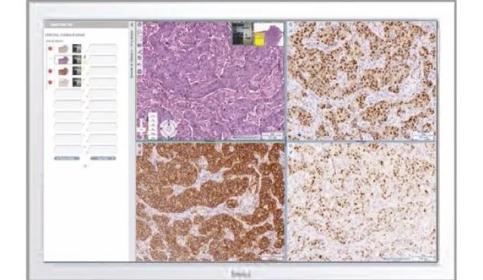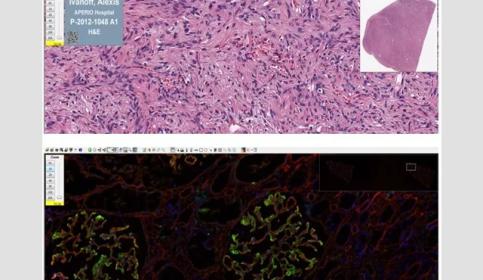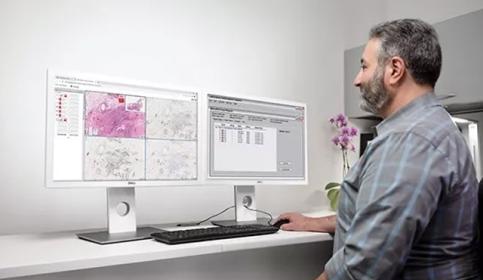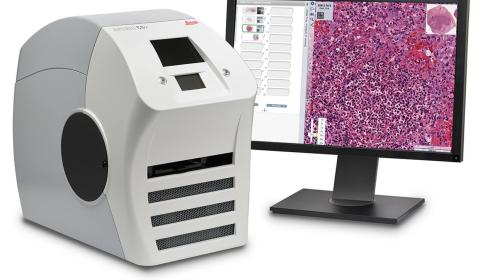Manage – Aperio Digital Pathology Software
Scalable. Accessible. Secure.
Effective implementation of digital pathology requires efficient management of images and data. Leverage Leica Biosystems extensive pathology, workflow, and information technology expertise to integrate digital pathology in your organization.
Whether supporting a single institute installation or a multi-site hub and spoke architecture, our range of web-based software solutions provide an enterprise-level platform for your needs. Flexible deployment options facilitate on-premise, hosted, and cloud-based architectures, so you can choose the solution that is right for you.
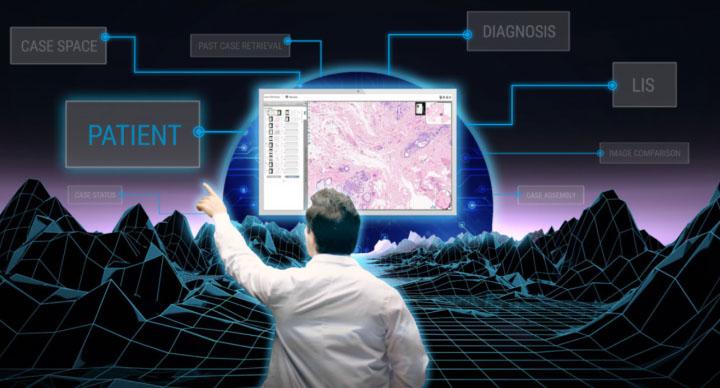
HALO AP®
HALO AP is a case-centric image management system for routine diagnostics with intuitive workflows for Multidisciplinary Team Meetings, Internal and External consultations, and Clinical Trials.
HALO Link
HALO Link is a browser-based, study-centric digital pathology image management system that helps research organizations worldwide to safely and securely manage, share, and analyze digital slides and data.
Aperio eSlide Manager with WebViewer DX
Begin your digital pathology journey with high-quality whole slide images, obtained from high-throughput Aperio scanners, and retain precision quality with Aperio eSlide Manager image management software with WebViewer DX interface.
Aperio ImageScope
Downloadable viewing software—experience rapid access to crisp, true-color digital slide images.
Aperio LIS Connectivity Solution
Fast & easy LIS/LIMS integration utility to provide interoperability. Drives workflow efficiencies in pathology diagnostic review
More products
Aperio GT 450 DX System
Scale up Digital Pathology operations by increasing throughput in high volume clinical pathology labs
Aperio CS2
5 slide capacity, brightfield scanner for low throughput, high quality scans. 2x3 slide option available.
New and relevant information, ranging from the basics to specific application know-how.
What is Digital Pathology?
Tips for Choosing a Digital Pathology Image Analysis Solution
Going Digital: The"Why's" and "How's" of Adopting Digital Pathology


